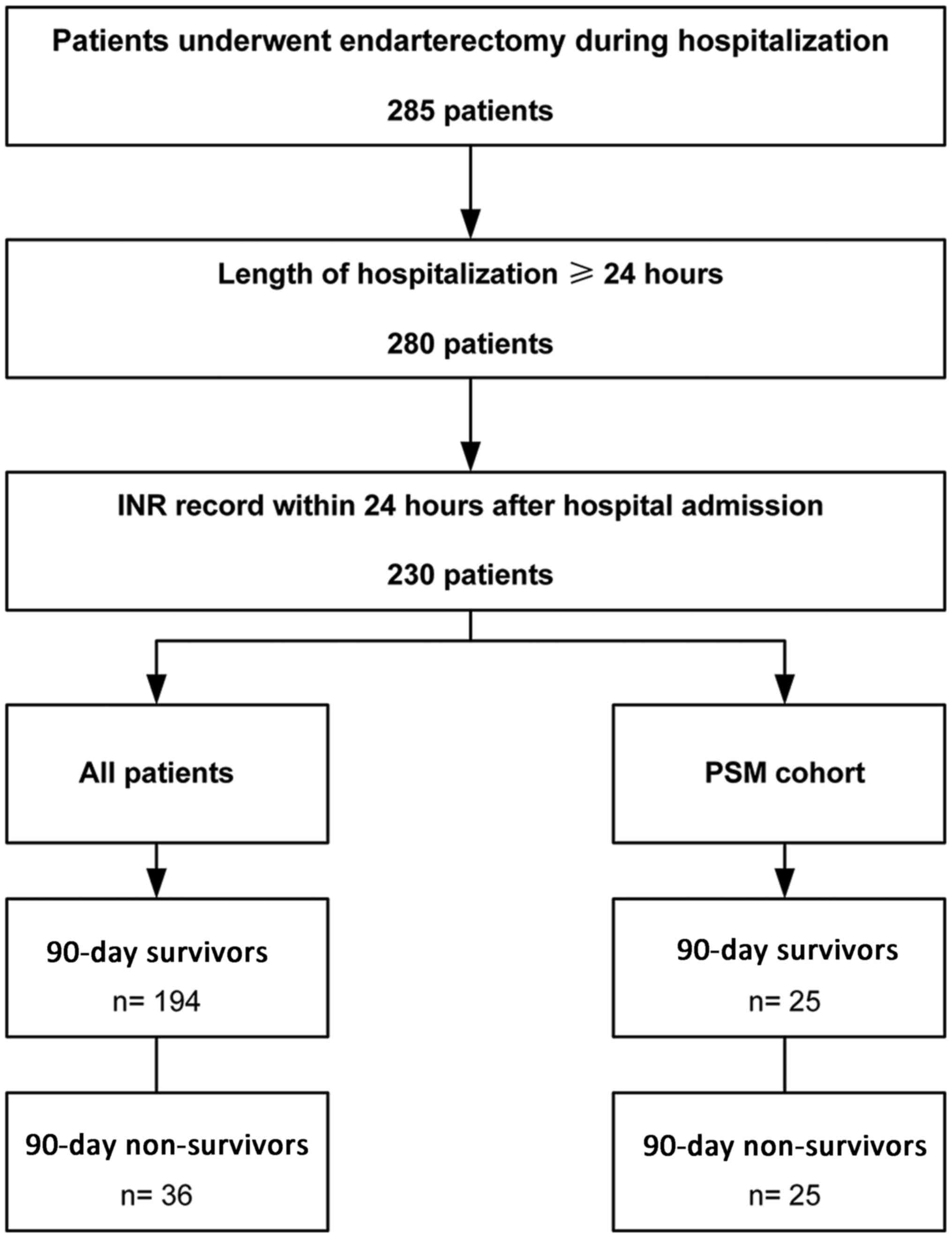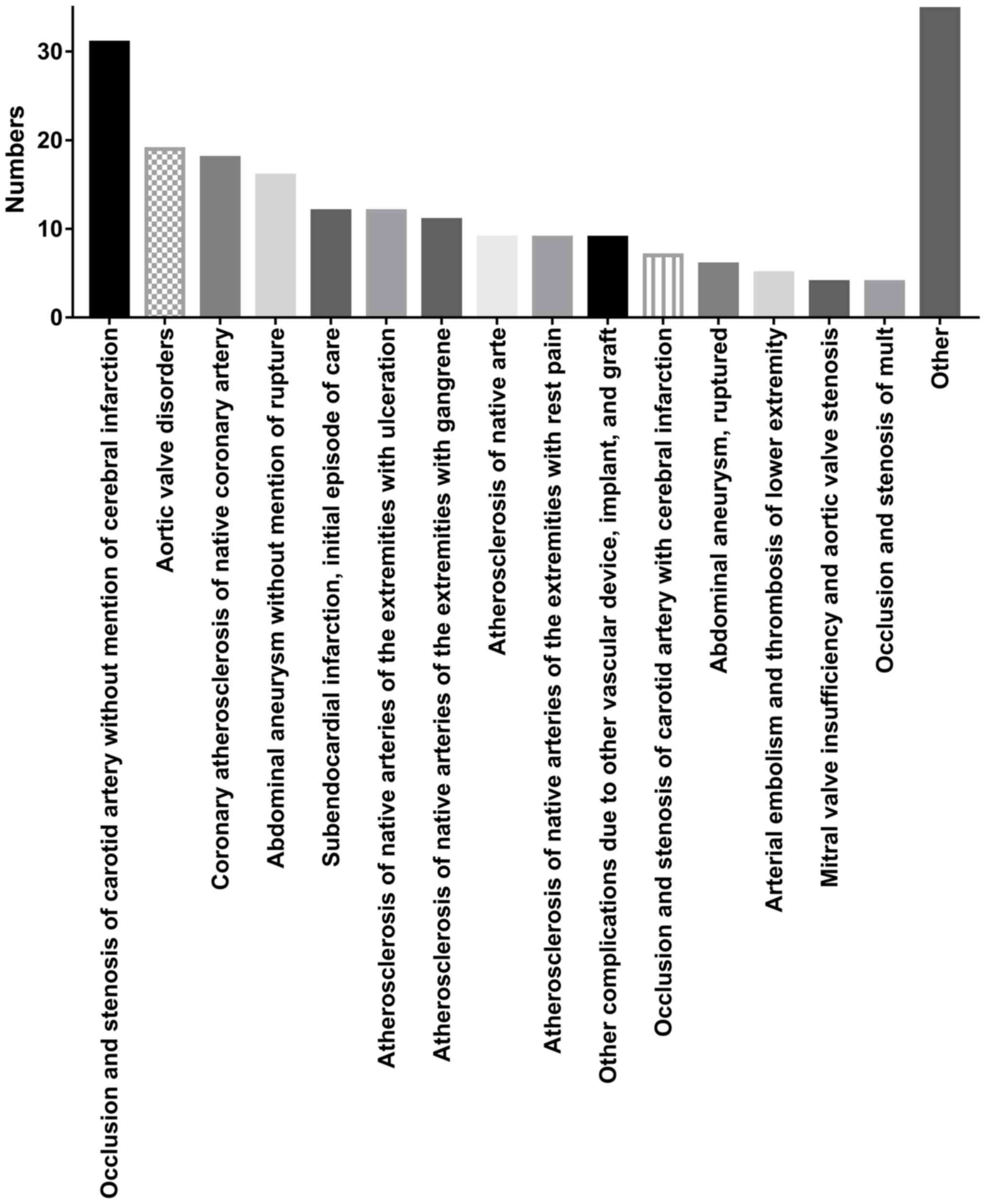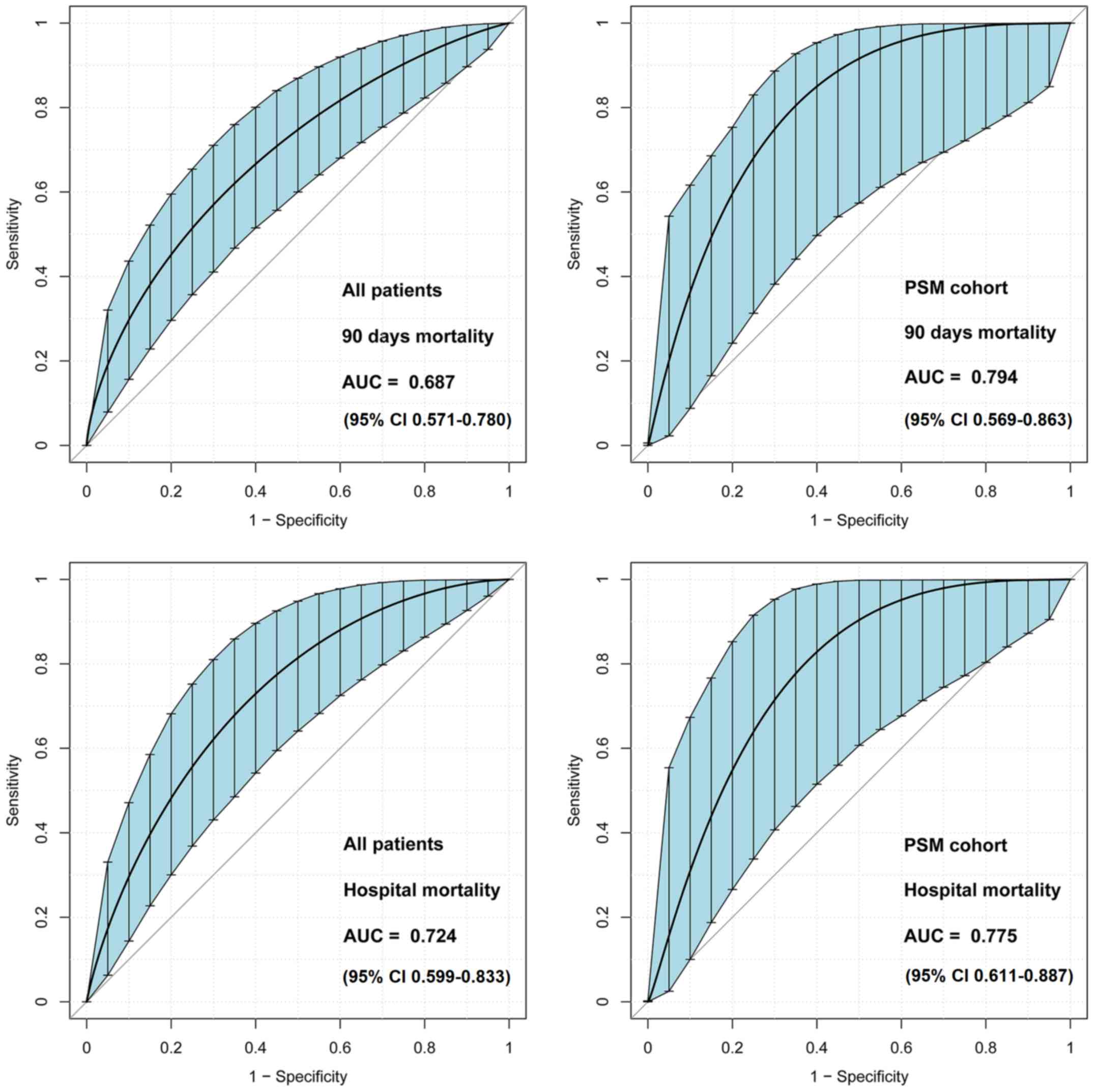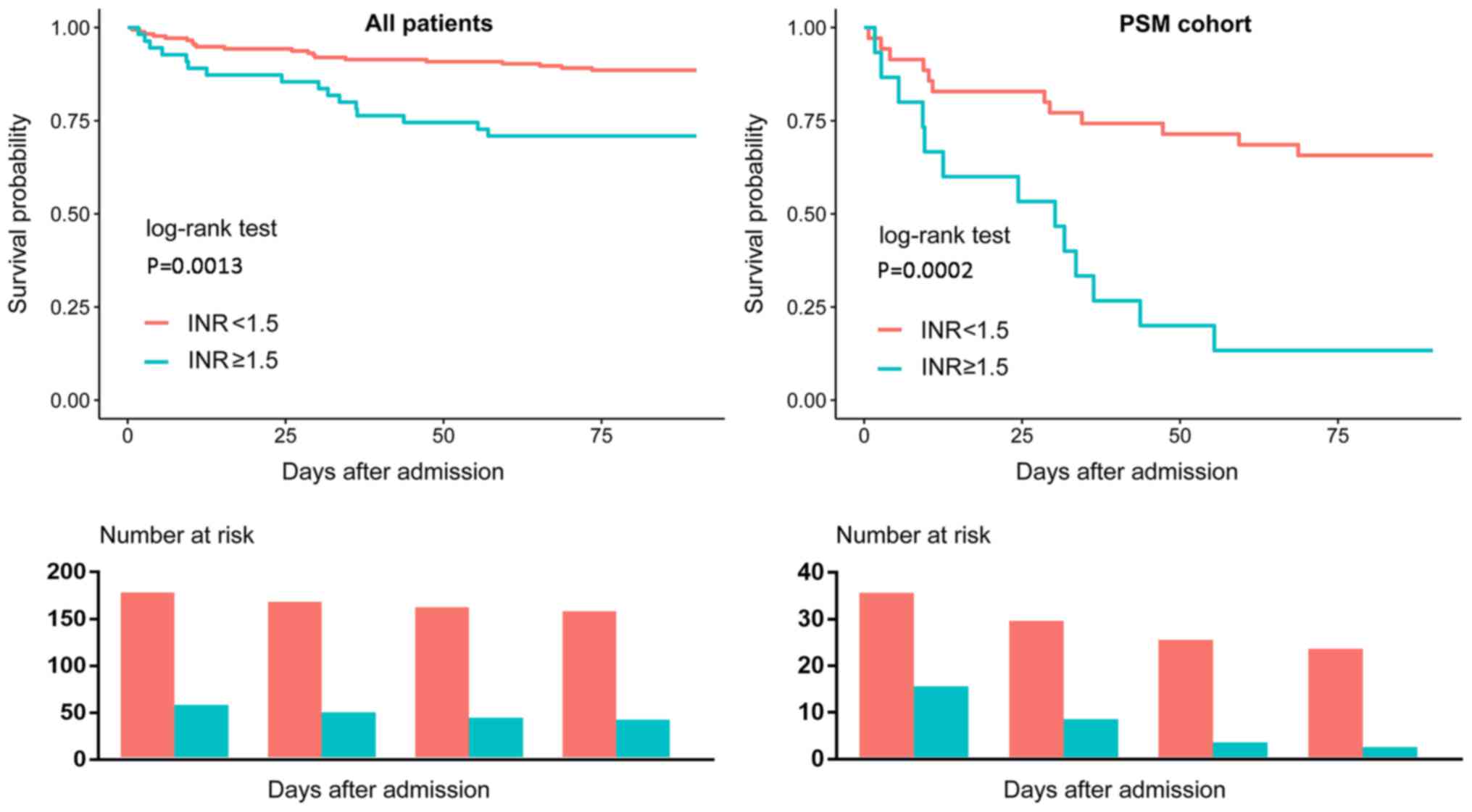|
1
|
Thompson JE: The evolution of surgery for
the treatment and prevention of stroke. The Willis Lecture. Stroke.
27:1427–1434. 1996. View Article : Google Scholar : PubMed/NCBI
|
|
2
|
Sarkar R and Messina LM: Endarterectomy of
the abdominal aorta and its branchesVascular surgery. Lumley JSP
and Hoballah JJ: Berlin, Heidelberg: Springer Berlin Heidelberg;
pp. 209–230. 2009, View Article : Google Scholar
|
|
3
|
Kumamaru H, Jalbert JJ, Nguyen LL,
Gerhard-Herman MD, Williams LA, Chen CY, Seeger JD, Liu J, Franklin
JM and Setoguchi S: Surgeon case volume and 30-day mortality after
carotid endarterectomy among contemporary medicare beneficiaries:
Before and after national coverage determination for carotid artery
stenting. Stroke. 46:1288–1294. 2015. View Article : Google Scholar : PubMed/NCBI
|
|
4
|
Nguyen BN, Amdur RL, Abugideiri M, Rahbar
R, Neville RF and Sidawy AN: Postoperative complications after
common femoral endarterectomy. J Vasc Surg. 61:1489–1494. 2015.
View Article : Google Scholar : PubMed/NCBI
|
|
5
|
Knappich C, Kuehnl A, Tsantilas P, Schmid
S, Breitkreuz T, Kallmayer M, Zimmermann A and Eckstein HH: Patient
characteristics and in-hospital outcomes of emergency carotid
endarterectomy and carotid stenting after stroke in evolution. J
Vasc Surg. 68:436–444. 2018. View Article : Google Scholar : PubMed/NCBI
|
|
6
|
Power GS and Harrison DA: Why try to
predict ICU outcomes? Curr Opin Crit Care. 20:544–549. 2014.
View Article : Google Scholar : PubMed/NCBI
|
|
7
|
Verma A and Kole T: International
normalized ratio as a predictor of mortality in trauma patients in
India. World J Emerg Med. 5:192–195. 2014. View Article : Google Scholar : PubMed/NCBI
|
|
8
|
Leeper CM, Nasr I, McKenna C, Berger RP
and Gaines BA: Elevated admission international normalized ratio
strongly predicts mortality in victims of abusive head trauma. J
Trauma Acute Care Surg. 80:711–716. 2016. View Article : Google Scholar : PubMed/NCBI
|
|
9
|
Cao C, Martinelli A, Spoelhof B, Llinas RH
and Marsh EB: In potential stroke patients on warfarin, the
international normalized ratio predicts ischemia. Cerebrovasc Dis
Extra. 7:111–119. 2017. View Article : Google Scholar : PubMed/NCBI
|
|
10
|
Benediktsson S, Frigyesi A and Kander T:
Routine coagulation tests on ICU admission are associated with
mortality in sepsis: An observational study. Acta Anaesthesiol
Scand. 61:790–796. 2017. View Article : Google Scholar : PubMed/NCBI
|
|
11
|
Johnson AE, Pollard TJ, Shen L, Lehman LW,
Feng M, Ghassemi M, Moody B, Szolovits P, Celi LA and Mark RG:
MIMIC-III, a freely accessible critical care database. Sci Data.
3:1600352016. View Article : Google Scholar : PubMed/NCBI
|
|
12
|
Johnson A, Stone DJ, Celi LA and Pollard
TJ: The MIMIC code repository: Enabling reproducibility in critical
care research. J Am Med Inform Assoc. 25:32–39. 2018. View Article : Google Scholar : PubMed/NCBI
|
|
13
|
Le Gall JR, Lemeshow S and Saulnier F: A
new simplified acute physiology score (SAPS II) based on a
European/North American multicenter study. Jama. 270:2957–2963.
1993. View Article : Google Scholar : PubMed/NCBI
|
|
14
|
Steiner C, Elixhauser A and Schnaier J:
The healthcare cost and utilization project: An overview. Eff Clin
Pract. 5:143–151. 2002.PubMed/NCBI
|
|
15
|
Thompson NR, Fan Y, Dalton JE, Jehi L,
Rosenbaum BP, Vadera S and Griffith SD: A new Elixhauser-based
comorbidity summary measure to predict in-hospital mortality. Med
Care. 53:374–379. 2015. View Article : Google Scholar : PubMed/NCBI
|
|
16
|
Hylek EM, Regan S, Go AS, Hughes RA,
Singer DE and Skates SJ: Clinical predictors of prolonged delay in
return of the international normalized ratio to within the
therapeutic range after excessive anticoagulation with warfarin.
Ann Intern Med. 135:393–400. 2001. View Article : Google Scholar : PubMed/NCBI
|
|
17
|
Makris M, van Veen JJ and Maclean R:
Warfarin anticoagulation reversal: Management of the asymptomatic
and bleeding patient. J Thromb Thrombolysis. 29:171–181. 2010.
View Article : Google Scholar : PubMed/NCBI
|
|
18
|
Hylek EM and Singer DE: Risk factors for
intracranial hemorrhage in outpatients taking warfarin. Ann Intern
Med. 120:897–902. 1994. View Article : Google Scholar : PubMed/NCBI
|
|
19
|
Hansen P, Zmistowski B, Restrepo C,
Parvizi J and Rothman RH: Does international normalized ratio level
predict pulmonary embolism? Clin Orthop Relat Res. 470:547–554.
2012. View Article : Google Scholar : PubMed/NCBI
|
|
20
|
Adike A, Al-Qaisi M, Baffy NJ, Kosiorek H,
Pannala R, Aqel B, Faigel DO and Harrison ME: International
normalized ratio does not predict gastrointestinal bleeding after
endoscopic retrograde cholangiopancreatography in patients with
cirrhosis. Gastroenterology Res. 10:177–181. 2017. View Article : Google Scholar : PubMed/NCBI
|
|
21
|
Cropp JS and Bussey HI: A review of enzyme
induction of warfarin metabolism with recommendations for patient
management. Pharmacotherapy. 17:917–928. 1997.PubMed/NCBI
|
|
22
|
Rohde LE, de Assis MC and Rabelo ER:
Dietary vitamin K intake and anticoagulation in elderly patients.
Curr Opin Clin Nutr Metab Care. 10:1–5. 2007.PubMed/NCBI
|
|
23
|
Mlejnsky F, Klein AA, Lindner J, Maruna P,
Kvasnicka J, Kvasnicka T, Zima T, Pecha O, Lips M, Rulisek J, et
al: A randomised controlled trial of roller versus centrifugal
cardiopulmonary bypass pumps in patients undergoing pulmonary
endarterectomy. Perfusion. 30:520–528. 2015. View Article : Google Scholar : PubMed/NCBI
|


















